#province de teruel
Text
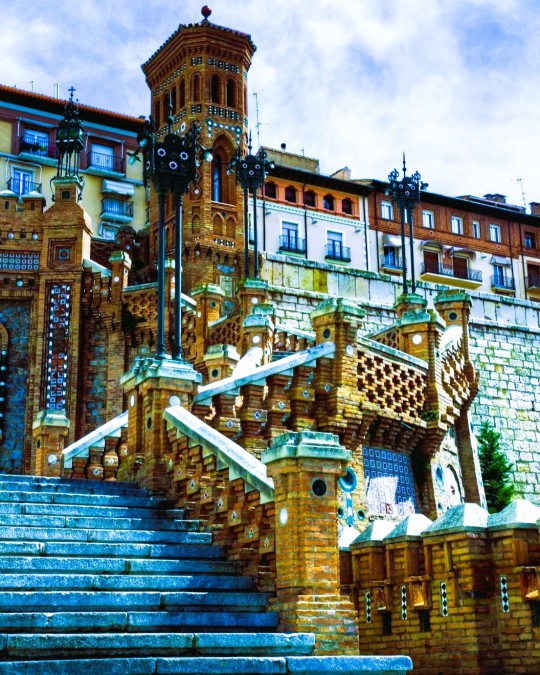
Teruel, Spain: Teruel is a city in Aragon, located in eastern Spain, and is also the capital of Teruel Province. Though the Escalinata Staircase technically a purpose-built construction – meant to connect the centro de la ciudad to the railway station – the Escalinata Staircase has become so much more. The town of Teruel, an easy day trip from the modernist city of Valencia, is often called the “town of mudéjar architecture” (meaning Moorish-influenced architecture). Wikipedia
57 notes
·
View notes
Text
i decided to unite my love for maps and for OT and make a map of the distribution of OT contestants from OT 2017 - 2023 in regards to their residence* because i find it so fascinating, like yeah it does kinda follow where major urban centers concentrate but also why is there so little people in valència? so many in iruña specifically? how is that outside madrid the only other OT contestant from castile is from guadalajara from all places???
*I followed the locations from the wikipedia page; in OT it's necessary to reside in spain but you don't need to have the spanish nationality to participate so i'll add the nationalities when needed!

below the cut i'll specify where each contestant is from, province by province, with pics of all the towns and cities !!!
A CORUÑA:
OT 2017: Pontedeume (Miriam Rodríguez), Santiago de Compostela (Roi Méndez)
OT 2018: As Pontes de García Rodríguez (Sabela Ramil)
OT 2020: Sada (Eva Barreiro)
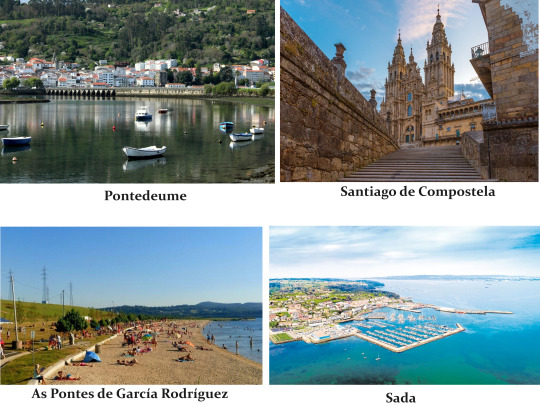
OURENSE:
OT 2017: Ourense (Luis Cepeda)

BIZKAIA:
OT 2017: Bilbo (Juan Antonio Cortés)
OT 2023: Getxo (Martin Urrutia)

NAFARROA:
OT 2017: Iruña (Amaia Romero)
OT 2018: Iruña (Natalia Lacunza)
OT 2020: Iruña (Anne Lukin, Maialen Gurbindo)
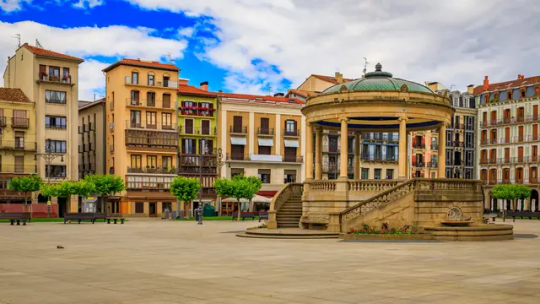
ZARAGOZA:
OT 2023: Zaragoza (Naiara Moreno), Magallón (Juanjo Bona)

TERUEL:
OT 2020: Alcañiz (Anaju Calavia)

BARCELONA:
OT 2017: Sant Climent de Llobregat (Aitana Ocaña), El Prat de Llobregat (Alfred García), Gavà (Nerea Rodríguez), Montgat (Raoul Vázquez), Terrassa (Miki Núñez)
OT 2018: Esplugues de Llobregat (Carlos Right)
OT 2020: Sant Cugat del Vallès (Nick Maylo), Sant Joan Despí (Ariadna Tortosa)
OT 2023: Vallirana (Lucas Curotto, he's Uruguayan)

ILLES BALEARS:
OT 2017: Palma (Ricky Merino)
OT 2018: Bunyola (Joan Garrido)
OT 2023: Ciutadella de Menorca (Chiara Oliver, she's half British)

GUADALAJARA:
OT 2023: Yunquera de Henares (Omar Samba, he's half Senegalese)
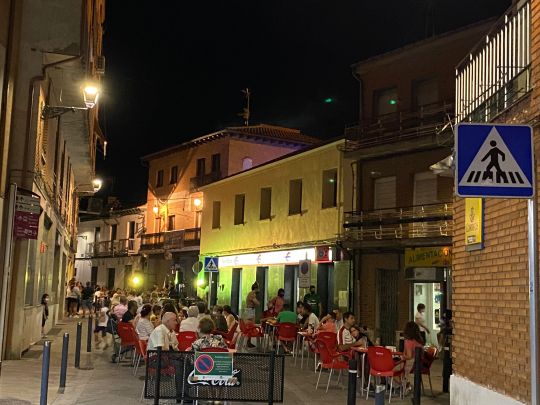
MADRID:
OT 2018: Madrid (María Villar, África Adalia, Alfonso La Cruz - he's Venezuelan)
OT 2020: Alcalá de Henares (Bruno Alves, he's Uruguayan)
OT 2023: San Fernando de Henares (Bea Fernández), Madrid (Ruslana Panchyshyna, she's Ukranian and has lived several years in the Canary Islands; in fact her accent is Canarian. I do not know which island / town and in the wikipedia page it listed her as a Madrid resident, that's why she's included here)

CÁCERES:
OT 2017: Malpartida de Plasencia (Thalía Garrido)
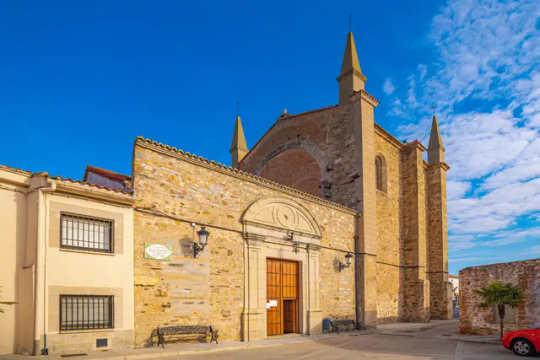
ALACANT:
OT 2018: Elx (Alba Reche)
OT 2020: Beniarrés (Samantha Gilabert)

MURCIA:
OT 2020: Murcia (Flavio Fernández)

GRANADA:
OT 2017: Huétor Tájar (Mimi Doblas)
OT 2023: Armilla (Paul Thin), Motril (Violeta Hódar), Ogíjares (Denna Ruiz)

MÁLAGA:
OT 2017: Alhaurín de la Torre (Mireya Bravo)
OT 2018: Torre del Mar (Marta Sango), Málaga (Noelia Franco)
OT 2023: Mijas (Salma Díaz)

CÓRDOBA:
OT 2020: Córdoba (Hugo Cobo), Adamuz (Rafa Romera)
OT 2023: Córdoba (Álex Márquez)
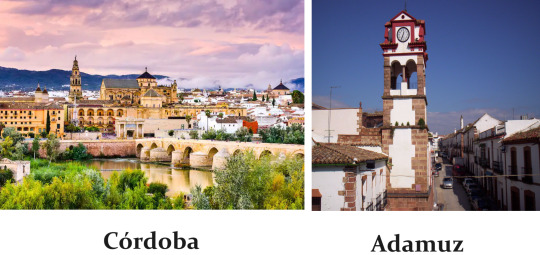
SEVILLA:
OT 2017: Dos Hermanas (Marina Rodríguez)
OT 2018: Bormujos (Famous Oberogo, he's Nigerian)
OT 2023: Sevilla (Álvaro Mayo)

CÁDIZ:
OT 2018: San Fernando (Julia Medina), Sanlúcar de Barrameda (Dave Zulueta)
OT 2020: Barbate (Jesús Rendón, Javy Ramírez)

CEUTA:
OT 2020: Ceuta (Gèrard Rodríguez)

LAS PALMAS:
OT 2018: Gáldar (Marilia Monzón)
OT 2020: Las Palmas de Gran Canaria (Eli Rosex, Nia Correia - she's half Cape Verdian)
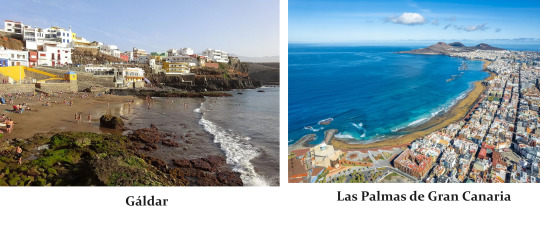
SANTA CRUZ DE TENERIFE:
OT 2017: San Cristóbal de La Laguna (Ana Guerra), Adeje (Agoney Hernández)
OT 2018: Adeje (Damion Frost, he's German)
OT 2023: San Cristóbal de La Laguna (Cris Bartolomé, he's half Equatorial Guinean), Santa Cruz de Tenerife (Suzete Correia, she's Sao Tomean)

#vivitalksot#spain#map#sorry for the mess in barcelona#i was trying to place the dots in more or less where the town was#but in the end it just looks bad. sorry :(
12 notes
·
View notes
Text
my favorite card deck is actually the aragonese inspired one made my ib*rcaja bc its soo pretty and has a few of the traditional dresses:
Dress from Echo, Uesca dancer dress, and dress from Echo:

Dresses from Teruel:

Dress from Casp, Tauste dancer, and Zaragoza province/region dress:

Dress from Ansó, Yebra de Basa dancer, and another Ansó dress:

Here are the four bastos:
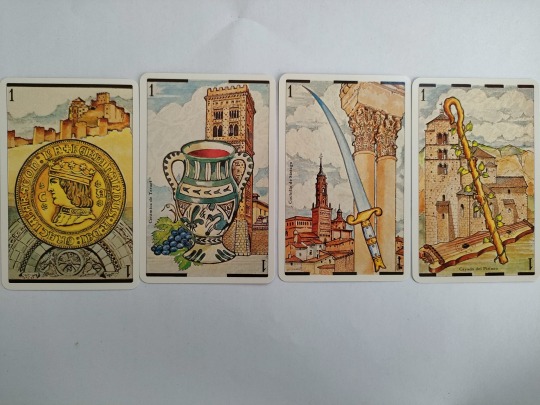
(coin with Ferdin*nd and the Lobarre Castle in the background, traditional ceramic from Teruel (with wine inside of course) and the San Martín Tower in the background, knife from Sastago and some mudéjar style church tower (not sure which one tbh) in the background, and a shepherd's crook from the Pyrenees and a Serrablo church in the background)
And here is St. George, patron saint of Aragon, slaying the dragon:
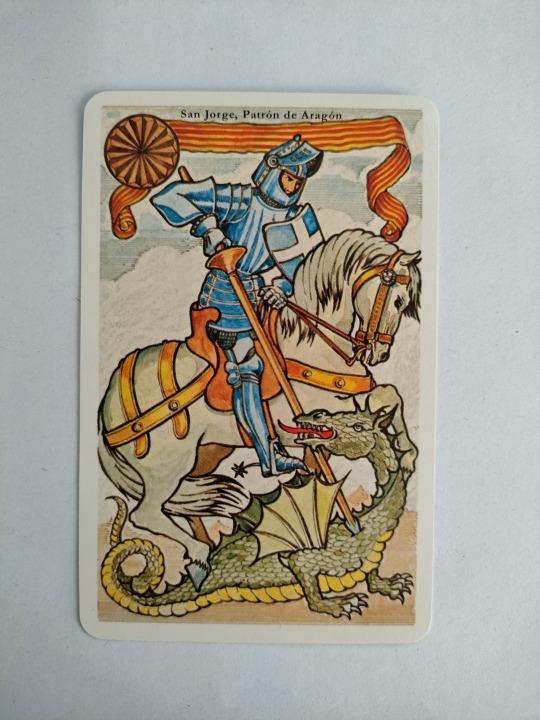
if you want to know more about some of the outfits, ive made posts about the Ansó dresses here, here, and here!
#it gets very long bc i took pics of the cards so i put the read more#but i very much enjoy looking at the dresses so please press the read more i think the deck is very well done#z puya cosetas#polvo niebla viento y sol
15 notes
·
View notes
Photo

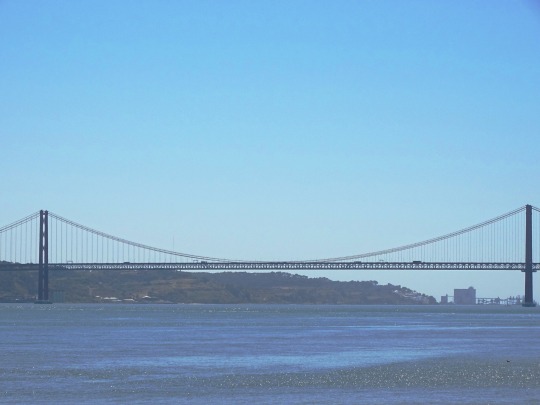
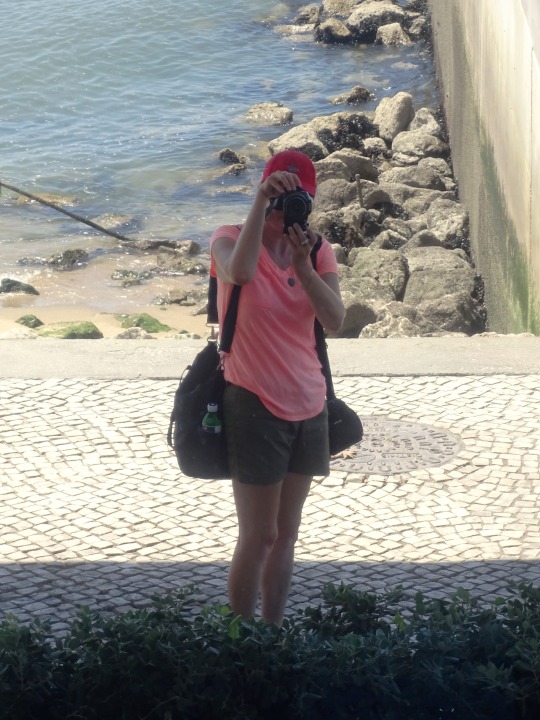

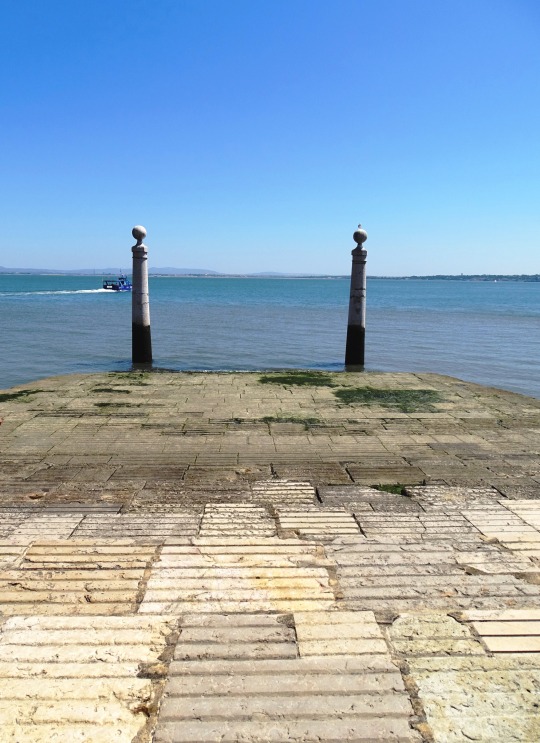
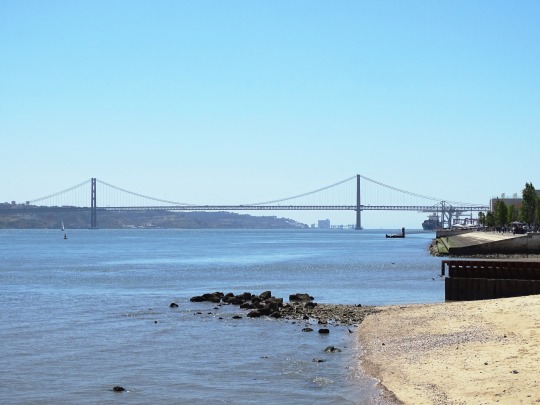



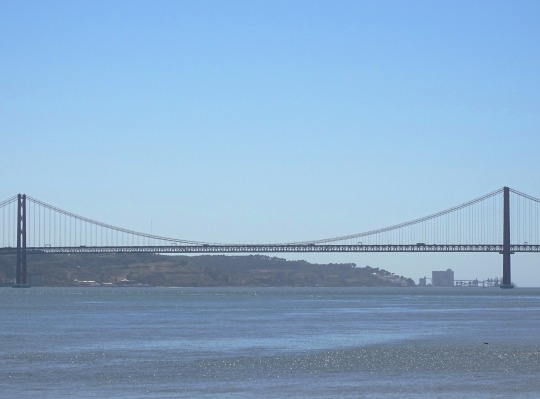
Riverfront, Lisbon (No. 4)
The Tagus is the longest river in the Iberian Peninsula, which it crosses in its central part, following an east-west course, with a slight incline towards the southwest, which is accentuated when it reaches Portugal, where it receives the name of Tejo.
It is born in the Universal mountains, in the Albarracín mountain range (Teruel), on the western branch of the Iberian system and, after traveling 1007 km, it reaches the Atlantic Ocean in the city of Lisbon. At its mouth it forms the estuary of the Mar de la Paja, into which it pours an average flow of 456 m³/s. In its first 816 km it crosses Spain, where it runs through four autonomous communities (Aragón , Castilla-La Mancha , Madrid and Extremadura ) and a total of six provinces (Teruel, Guadalajara, Cuenca, Madrid, Toledo and Cáceres).
After forming a border between Spain and Portugal along 47 km, it enters the latter country. Here it runs 145 km, through the traditional regions of Beira Baixa, Alto Alentejo, Ribatejo and Extremadura, in which the districts of Castelo Branco, Portalegre, Santarém and Lisboa are integrated. The most important cities through which it passes are Aranjuez, Toledo and Talavera de la Reina in Spain; and Abrantes, Santarém and Lisbon, in Portugal.
Source: Wikipedia
#Cais das Colunas#Tagus River#River Tejo#River Tajo#cityscape#architecture#river bank#street lamp#street light#reflection#Lisboa#Lisbon#25 de Abril Bridge#ship#engineering#tourist attraction#landmark#original photography#summer 2021#Portugal#Southern Europe#water#riverfront
5 notes
·
View notes
Link
0 notes
Photo

During the Spanish Civil War Calanda, a town in the province of Teruel, Aragon, Spain. It lies on the southern fringe of the Ebro river basin, at the confluence of the Rivers Guadalope and Guadalopillo. Was the scene of the martyrdom of 8 Catholic priests and brothers, members of the Order of Saint Dominic, whose names are: Antonio Manuel López Couceiro, Felicísimo Díez González, Gumersindo Soto Barros, Lamberto María de Navascués de Juan, Lucio Martínez Mancebo, Matías Manuel Albert Ginés, Saturio Rey Robles and Tirso Manrique Melero, who were murdered on July 29, 1936, declared Venerables on Dec. 20, 1999 by Pope John Paul II, and beatified by him on March 11, 2001. https://www.instagram.com/p/Cgmb3hLr3Ds/?igshid=NGJjMDIxMWI=
0 notes
Text
Exspaining Spain: regions
Aragon (Aragón/Aragó)
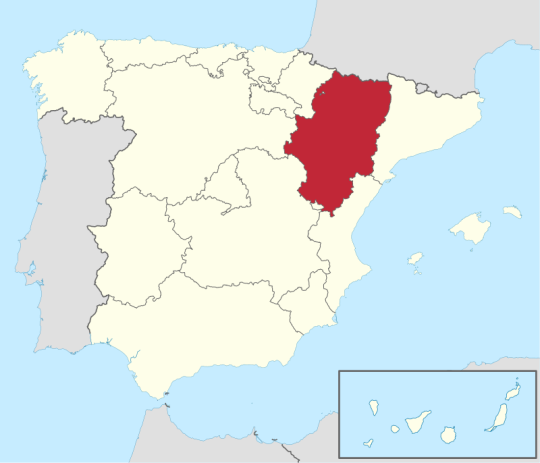
Aragon is divided into three provinces: Huesca, Teruel, and Zaragoza. The capital city is Zaragoza.

Architecture
The traditional architecture of the region is Mudéjar style, which is based on technical and decorative elements derived from Islamic arts combined with the Romanesque, Gothic, and Renaissance styles. In Aragon, Mudéjar architecture adopted the Gothic style.

Climate
The predominant climate type is the continental Mediterranean one, characterized by warm to hot summers and cold winters. Aragon alternates dry and wet years and has frequent and intense winds. The average temperature throughout the year is 13 °C (55.4 ºF).
Economy
The service and industrial sectors are the backbone of the economy, but agriculture is still relevant around the Ebro River. The most important crops are wheat, barley, rye, fruit, and grapes.

The main industries are the Opel automotive plant, the mining of iron ore and coal, and electricity production.
Famous people
Alberto Zapater - soccer player
Benedict XIII - pope
Enrique Bunbury - singer
Eva Amaral - singer
Ferdinand II of Aragon - king
Francisco de Goya - painter
Jesús Moncada - writer
Luis Buñuel - filmmaker
Pablo Serrano - sculptor
Ramón J. Sender - writer
Santiago Ramón y Cajal - Nobel Prize in Medicine
Gastronomy
The Aragonese diet is based on lamb, beef, dairy products, ham, olive oil, rainbow trout, salmon, truffles and wild mushrooms, fruit, and wine. Typical dishes include ternasco (roast lamb), albóndigas de bacalao (cod meatballs), jamón de Teruel (Teruel ham), borage, cardoon, trenza de Almudévar (a braided pastry), guirlache (a type of nougat), and frutas de Aragón (candied fruits covered in chocolate).

Ternasco

Trenza de Almudévar
History
1100 BCE - Urnfield culture
6th century BCE - Vascones, Suessetani, Sedetani, Iacetani, Ilergetes, and Celtiberians
3rd century BCE - Romans
5th century CE - Visigoth conquest
714 - Muslim conquest of Aragon
828 - first mention of the County of Aragon
11-12th centuries - creation of the Crown of Aragon, which also controlled Sicily, Corsica, Sardinia, and Naples
1469 - marriage of Ferdinand II of Aragon and Isabella of Castile, which created the bases of modern-day Spain
1707 - abolishment of Aragonese fueros (a regional compilation of laws) and political structures
1982 - Statute of Autonomy
Languages
Spanish is the only official language, but Aragonese and Catalan are also spoken in the north and the east, respectively. Aragonese shares many traits with Catalan, such as Romance initial f- being preserved (filium > fillo vs. fill vs. hijo [son]) and Romance groups -lt- and -ct- resulting in -t- (factum > feito vs. fet vs. hecho [done]).
It has some traits that are different from both Catalan and Spanish, like Latin -b- being maintained in past imperfect endings (teneba, teniba vs. tenía vs. tenia) and Latin -ll- being kept as geminate /ll/. Catalan, Occitan, Spanish, and French have all influenced Aragonese vocabulary.
(Latin > Aragonese vs. Catalan vs. Spanish)
Monuments and landmarks
There are four UNESCO World Heritage Sites: Mudéjar Architecture of Aragon, Pyrénées - Mont Perdu (shared with France), Rock Art of the Mediterranean Basin on the Iberian Peninsula (shared with other regions of Spain), and Routes of Santiago de Compostela: Camino Francés and Routes of Northern Spain (shared with France and other regions of Spain).
Other landmarks include the Aljafería Palace (Zaragoza), the Cathedral-Basilica of Our Lady of the Pillar (Zaragoza), the Lovers of Teruel Mausoleum (Teruel), and the Ordesa y Monte Perdido National Park (Huesca).

Cathedral-Basilica of Our Lady of the Pillar

Ordesa y Monte Perdido National Park
34 notes
·
View notes
Photo

Explorant els confins entre Terol i Saragossa
Explorando los confines entre Teruel y Zaragoza
Exploring the limits between Terual and Zaragoza
Aquest darrer cap de setmana l'hem dedicat a conèixer més a fons l'àrea geogràfica situada entre les províncies de Terol i Saragossa, a la comarca del Matarranya. Es tracta d'una zona d'una gran bellesa on es combinen els camps d'olivera i ametller amb els boscos de pi i arbustives.
La topografia és suau, amb lleugers desnivells, els quals, en funció de si presenten pendents més o menys forts dificulten o ajuden respectivament en la implantació de conreus. És precisament l'alternança quasi infinita d'aquests desnivells el fet que configura la bellesa d'aquest territori i la seva riquesa paisatgística.
L'entorn està travessat per una xarxa irregular de camins, els quals serveixen per permetre als agricultors anar i tornar als seus respectius pobles de residència. Aquesta xarxa de camins ocupa una extensió enorme, permetent comunicar les diferents localitats inclús sense la necessitat de fer ús de la carretera.
Considerem aquesta zona, per la varietat de microclimes que la seva rica topografia presenta, com a òptima per a la implantació del nostre projecte DerelictLab.
Este último fin de semana lo hemos dedicado a conocer más a fondo el área geográfica situada entre las provincias de Teruel y Zaragoza, en la comarca del Matarranya. Se trata de una zona de una gran belleza donde se combinan los campos de olivo y almendro con los bosques de pino y arbustivas.
La topografía es suave, con ligeros desniveles, los cuales, en función de si presentan pendientes más o menos fuertes dificultan o ayudan respectivamente en la implantación de cultivos. Es precisamente la alternancia casi infinita de estos desniveles el hecho de que configura la belleza de este territorio y su riqueza paisajística.
El entorno está atravesado por una red irregular de caminos, que sirven para permitir a los agricultores ir y volver a sus respectivos pueblos de residencia. Esta red de caminos ocupa una extensión enorme, permitiendo comunicar las diferentes localidades incluso sin necesidad de hacer uso de la carretera.
Consideramos esta zona, por la variedad de microclimas que su rica topografía presenta, como óptima para la implantación de nuestro proyecto DerelictLab.
This past weekend we spent some time getting to know the geographical area located alongside the border between the provinces of Teruel and Zaragoza, in the Matarranya county. This is an area of great beauty where olive and almond tree fields are combined with pine and shrub forests.
The topography is smooth, with slight gradients, which, depending on whether they have stronger or weaker slopes hinder or aid the establishment of crops. It is precisely the almost infinite alternation of these unevenness the one that shapes the beauty of this territory and its rich landscape.
The environment is crossed by an irregular network of pathways, which serve to allow farmers to go back and forth to their respective villages of residence. The pathways network covers a huge area, allowing the different towns to be accessible even without the need to use the main road.
We consider this area, due to the variety of microclimates that its topography presents, as optimal for the implementation of our DerelictLab project.
0 notes
Text
Discover Spain - Places to Visit in Spain - Albarracín in Teruel
youtube
Considered one of the most beautiful villages of the entire Spanish geography, Albarracín, in the province of Teruel, immerses the traveler who visits it in a beautiful medieval framework. And in an urban ensemble declared National Monument, surrounded by the Guadalaviar river and capital of the mountain range to which it gives its name within the Iberian System.
Ibn-Racin
Celts, Romans and Arabs have occupied these lands. With the Muslim invasion, a Berber group of the Ibn-Racin tribe arrived here, which gave the village its name. The disintegration of the Caliphate of Cordoba on which it depended produced its independence as a Muslim Taifa kingdom.
Initially sheltered in the shadow of the castle, which stands on a rocky outcrop, Albarracín already had a wall that enclosed it and separated it from its surroundings since the 10th century. Today some remains survive, such as the tower of the Andador, the citadel and the tower of the Water.
Albarracín, capital of the region of the same name, is one of the most visited towns in Aragon. Classified as a historic-artistic site, it is a place to stroll through its sloping streets and to approach the walls that surround it around its perimeter.
From the Muslim period it preserves most of the fortifications visible today. Its star monuments are the tower of the Andador, the citadel and the water tower.
After the failure of conquest by King James I in 1220, it was Pedro III of Aragon who incorporated it into the Crown of Aragon in 1300. As a result of its lustrous past, the beautiful Aragonese town has many monuments scattered throughout its historic center, which is located on the slopes of a mountain.
Among them are the Church of Santa María de Albarracín, the 16th century Cathedral (where you can admire the altarpiece of San Pedro, the main altarpiece and the Diocesan Museum), the Episcopal Palace, some stately mansions such as the Monterde family and a peculiar popular architecture where the Julianeta house, the house on Azagra street, the Plaza de la Comunidad and the small and evocative Plaza Mayor stand out.
But the charm of Albarracín is above all in the layout of its streets adapted to the difficult topography of the terrain, with staircases and passages and in the whole of its farmhouse of irregular walls, reddish in color, with wooden framework, in difficult balance, with eaves that touch each other.
0 notes
Text
Blesa

Vous pouvez partager vos connaissances en l’améliorant (comment ?) selon les recommandations des projets correspondants. Blesa est une commune d’Espagne, dans la Comarque de Cuencas Mineras, province de Teruel, communauté autonome d'Aragon.
Plus d'information https://ift.tt/3fFBgJL
0 notes
Photo
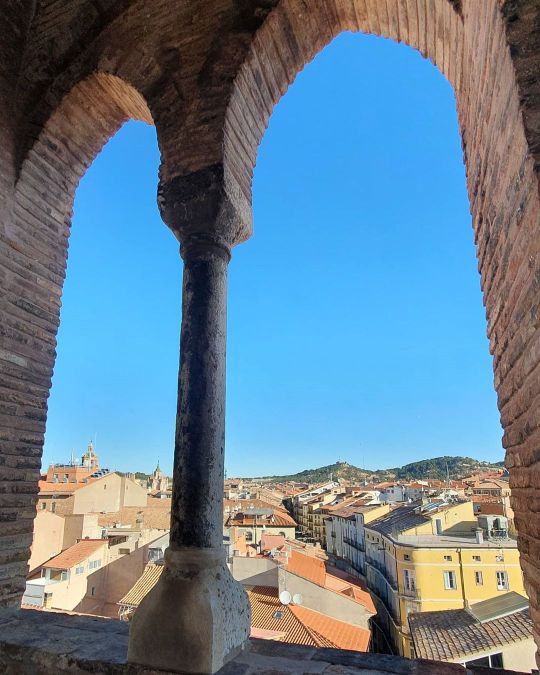
Torre mudejar de El Salvador. Medieval tower with moorish decoration. Located in Teruel, Aragon Province, Spain. ======== ========= ========= ========= ========= ========= #landmarks #beautifuldestinations #wonderful_places #travelblogger #backpackwithme #traveller #lonelyplanet #architecture #medievalcities #wonderful_places #history #ancientspain #torremudejar #mudejartower #medievaltower #teruel (em Torre mudéjar de El Salvador) https://www.instagram.com/p/B-USSh9J-Uy/?igshid=1d93iqqxgigx9
#landmarks#beautifuldestinations#wonderful_places#travelblogger#backpackwithme#traveller#lonelyplanet#architecture#medievalcities#history#ancientspain#torremudejar#mudejartower#medievaltower#teruel
0 notes
Photo
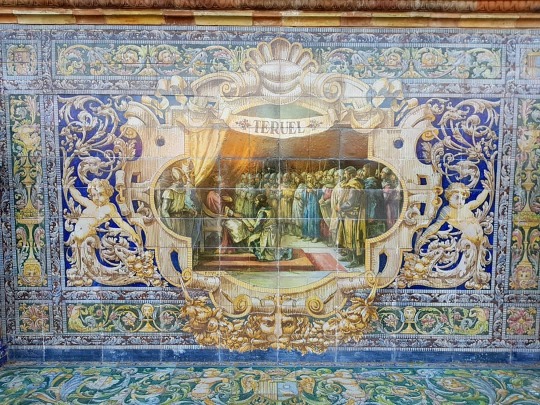
The "benches" of the #plazadeespanasevilla are famous; beautiful tiled representations of every Spanish province. Of course I had to find #teruel ! #spain #europe #espana #travel #travelling #travelwriting #photography #travelphotography #landscape #architecture #spanisharchitecture #travelblog #travelblogger #travelgram #seville #sevilla #andalucia #plazadeespaña #plazadeespana #southernspain (at Plaza de España) https://www.instagram.com/p/B9HGYLIAQE4/?igshid=vpku8srxt4w1
#plazadeespanasevilla#teruel#spain#europe#espana#travel#travelling#travelwriting#photography#travelphotography#landscape#architecture#spanisharchitecture#travelblog#travelblogger#travelgram#seville#sevilla#andalucia#plazadeespaña#plazadeespana#southernspain
0 notes
Text
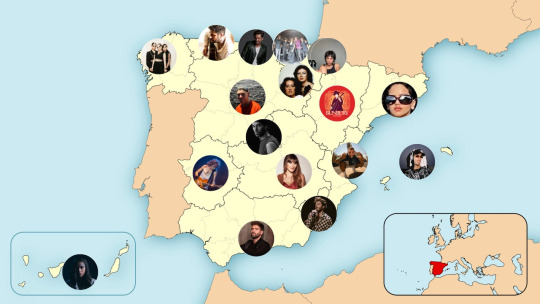
i just found this article from february (2022) in which they list the most listened to artist from each spanish province. i thought it would be fun to list them here with a link to one of their songs in case you want to listen to more spanish music and don't know where to start!
everything will be under the cut, as there's 50 provinces (plus the 2 autonomous cities, also listed!)
Andalucía:
Almería: David Bisbal
Cádiz: Niña Pastori
Córdoba: India Martínez
Granada: Lola Índigo
Huelva: Manuel Carrasco
Jaén: Joaquín Sabina
Málaga: Pablo Alborán
Sevilla: Beret
Aragón:
Uesca: Jarabe de Palo
Teruel: David Civera
Zaragoza: Bunbury
Asturias:
Melendi
Balears:
Rels B
Canarias:
Las Palmas: PtaZeta
Santa Cruz de Tenerife: Don Patricio
Cantabria:
Bustamante
Castilla-la Mancha:
Albacete: Rozalén
Ciudad Real: Dani Fernández
Cuenca: Jose Luis Perales
Guadalajara: Despistaos
Toledo: Pole.
Castilla y León:
Ávila: Marazu
Burgos: La M.O.D.A.
León: Café Quijano
Palencia: La La Love You
Salamanca: Pignoise
Segovia: Hens
Soria: Bordón 4
Valladolid: Celtas Cortos
Zamora: Jesús López-Cobos
Catalunya:
Barcelona: Rosalía
Girona: Mónica Naranjo
Lleida: Ezvit 810
Tarragona: Bongo Botrako
Ceuta:
La Shica
València:
Alacant: Kidd Keo
Castelló: Guitarricadelafuente
València: Zzoilo
Extremadura:
Badajoz: Azúcar Moreno
Cáceres: Extremoduro
Galiza:
A Coruña: Tanxugueiras
Lugo: Lucía Pérez
Ourense: Cepeda
Pontevedra: Sen Senra
La Rioja:
Baccara
Madrid:
Enrique Iglesias
Melilla:
Yosh
Murcia:
Blas Cantó
Nafarroa:
Natalia Lacunza
Euskadi:
Araba: Alex Ubago
Gipuzkoa: La Oreja de Van Gogh
Bizkaia: Fito y los Fitipaldis
#typicalspanish#hope you like em!!!!#also... the fact that there's two ex-auryn members here#are blas cantó and dani fernández the spanish harry styles and louis tomlinson?#harry and louis wish they were as cool as blas and dani 😌#also don't worry i counted them and there's six ot contestants in this list#i know you were dying to know the exact number
25 notes
·
View notes
Text
@motsimages asked me if i could explain some aragonese names, so here it is. all data is taken from the ine. the data might not be 100% accurate, since the ine only represents provinces with more than 5 people with that name, but it gives us an idea.
Acher-mountain in the val d’echo. currently there are 209 achers in aragon
Aimar-while this name in euskera is used for boys, in aragonese it is traditionally a girls’ name. there are 26 girls in aragon with this name.
Alodia-a saint of uncertain origin, it has a lot of veneration in the altoaragon. there are currently 90 alodias in aragon.
Anayet-mountain peak in the val de tena. there are 33 girls named anayet in uesca and zaragoza (from now on, zgz). also shoutout to the 8 anayets in navarra😌
Ánchel-and here we start with the translated names (with questionable orthography). equivalent of ángel. there are 48 ánchels in uesca and zgz. (for example, ánchel conte)
Bizén/Vicén-equivalent of vicente. there are 12 in aragon
Casbas-virgin of casbas. there is a romería celebrated in ayerbe for the virgin of casbas. theres also two towns named casbas (de biescas and de uesca)
Chabier-equivalent of javier. there are 42 in uesca and zgz
Chordi-there isnt data for this name, but i couldnt leave it out. patron saint of aragon, and equivalent of jorge. can also be jordi (in the more oriental parts of aragon)
Chuan-equivalent of juan
Cillas-virgin of cillas. evil spelling would be zillas. there is no data but i know of one person with this name so i guess it counts for something
Francho-català has cisco, spanish has paco, we have francho. equivalent of francisco, there are 105 franchos registered (including francho nagore and francho sarrablo), plus the ones named francisco that are called francho as diminutive.
Iguazel-another virgin, this one with veneration in castiello de jaca (chaca)
Ixeya-mountain peak in the vall de benás. there are 163 in uesca and zgz
Izarbe-one of the most common aragonese names (604 between the three provinces!!!). it is euskera in origin (apparently it means “under the stars”, with izar=stars and be=under (?)). there was an old medieval town with that name, and i believe a church too
Jara/Xara-of arabic origin, meaning “with a lot of vegetation”. this name is common all throughout spain, but the highest incidences are in the aragonese provinces (269 in uesca, 25 in teruel, and 315 in zgz, bringing in a total of 609 jaras)
Ibón-im ngl, we share this one with euskal herria <3. ibón means “glacial lake of the pyrenees” so yeah some ppl might think its weird to be named this, but apparently, theres men called ibón! there are 82 in aragón (compared to the over 3000 in euskadi😳)
Lizer/Licer-apparently its the equivalent of licerio (which i have never heard before). there are 150 lizers and 13 licers in aragon
Lorién-equivalent of lorenzo, san lorién is the patron saint of uesca. probably the most popular aragonese name for boys, there are 564 loriéns in aragon.
Malena-equivalent of magdalena, it is not a name only used in aragon, there are 208 girls with this name here
Orosia-patron saint of jaca, also is kind of an old person’s name. again, it is a name used in a lot of other spanish provinces, but the incidence is by far the highest in uesca, with 64 women with this name, and 11 in zgz
Pueyo-ngl this just means hill or peak (like puig in català). but there is also a virgen del pueyo so theres definitely women with this name
Salas-there is an ermita de salas in uesca (very very famous with uni ppl😌😩). there are 36 salas’ in aragon (all in uesca)
Zilia-can also be spelled cilia, but barely used. equivalent of cecilia. there are 25 zilias in aragon according to the ine, but according to hoyaragon there are 33
#anayet my beloved <3 idk why i love that name so much😩#also my name is on here😌should not take yall long to figure out which one lmao#actually i rly vibe w ixeya and izarbe too. and ibon and francho n acher#aragón#aragonese#aragonés#names#aragonese names#z puya cosetas
30 notes
·
View notes
Photo

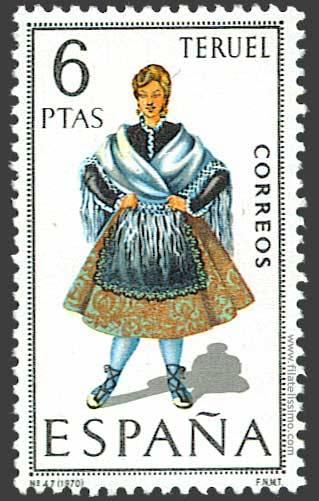

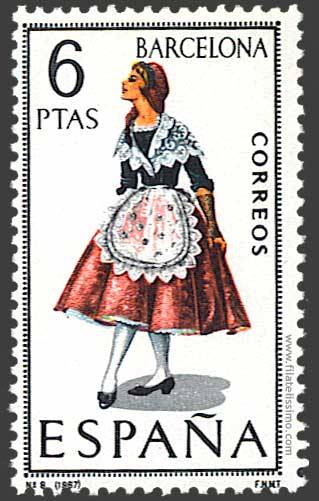
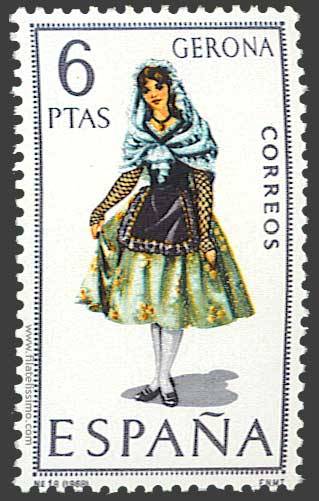





PART 4
Collection of stamps with the traditional costumes of each Spanish province.
These are the stamps belonging to the autonomous communities of Aragon (Huesca, Teruel and Zaragoza), Catalonia/Catalunya (Barcelona, Gerona/Girona, Lérida/Llerida and Tarragona), and Valencia (Valencia, Alicante y Castellón).
——–
Colección de sellos con los trajes tradicionales de cada provincia española.
Estos son los sellos pertenecientes a las comunidades autónomas de Aragón (Huesca, Teruel and Zaragoza), Cataluña/Catalunya (Barcelona, Gerona/Girona, Lérida/Lleida and Tarragona), y Comunidad Valenciana(Valencia, Alicante y Castellón).
———
Part: 1, 2, 3, 4, 5, 6, 7
#sellos#spain#españa#stamps#culture#cultura#folk#tradition#traditional#traditional costumes#folclore#trajes tradicionales#calatuña#catalonia#fashion#catalunya#aragón#valencia#alicante#comunidad valenciana#castellón#barcelona#lérida#lleida#tarragona#gerona#girona#zaragoza#teruel
10 notes
·
View notes
Photo
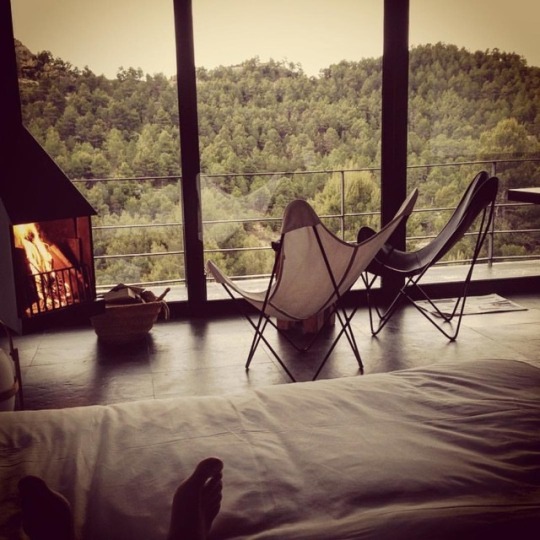
Waiting for the night... Hotel Consolacion. Located in Monroyo (Mont-Roig de Tastavins), 857 metres above sea level in the heart of the Matarraña region, Teruel, is one of the most beautiful and undiscovered regions of Spain; the province of Aragón. It is on the border with Castellón and Tarragona. Its charm lies instead in the harmony of its natural landscapes, pine forests, almond and olive groves. www.thesmallhotels.com ☎ +34 978 856755 @consolacionhotel @ximoalcoy ・・・ #consolacionhotel#monroyo#matarranya#teruel#rusticae (Hotel Consolación (Monroyo))
0 notes